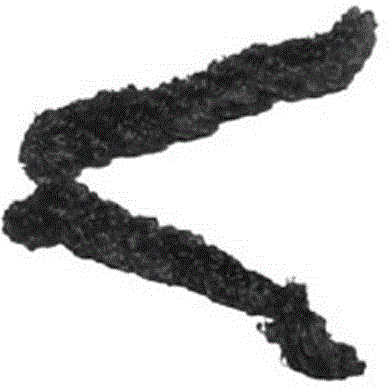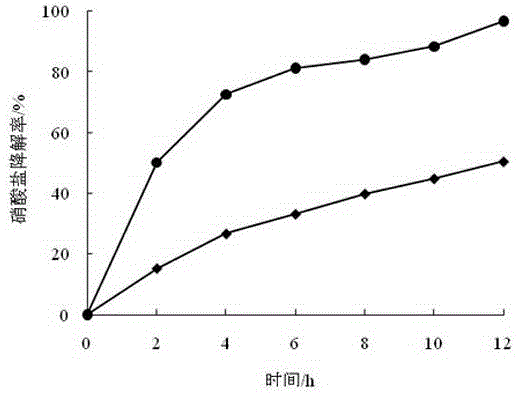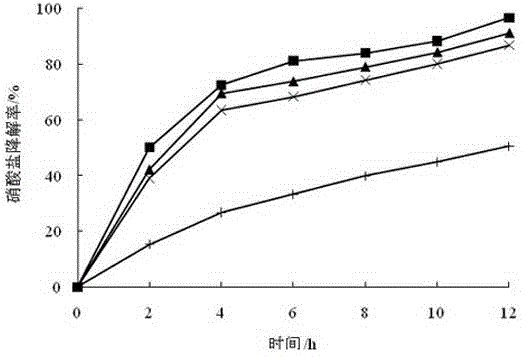Quinones-modified biological vector and application thereof in accelerating microbial denitrifying process
A biological carrier and compound technology, applied in the direction of anaerobic digestion treatment, etc., can solve the problems of low biological denitrification efficiency, accelerated anaerobic biodegradation of pollutants, high process, equipment investment and operating costs, and achieve low production costs and relatively low production costs. The effect of good capacity and simple modification process
- Summary
- Abstract
- Description
- Claims
- Application Information
AI Technical Summary
Problems solved by technology
Method used
Image
Examples
Embodiment Construction
[0017] The components and their proportions of Example 1-Example 21 are shown in Attached Table 1;
[0018] See attached table 2 for the reaction conditions and acceleration times of embodiment 1-embodiment 21.
[0019] One, the concrete steps of embodiment 1 and the usage test of product thereof:
[0020] 1, the concrete steps of embodiment 1 are as follows:
[0021] Add 0.5 g of sodium methylene bis-naphthalene sulfonate to 500 mL of water to form an aqueous solution of sodium methylene bis-naphthalene sulfonate, then add 10 g of disperse Cuilan S-GL and 20 g of polyester cloth to the above In the aqueous solution, adjust the pH to 5 with acetic acid, modify at 120°C for 10 hours, and keep stirring. After the modification, the polyester cloth is washed with tap water for 3 to 5 times, and then dried for later use. figure 1 shown.
[0022] 2. The application test of the biological carrier modified by the quinone compound in the present embodiment 1 in the process of accele...
PUM
 Login to View More
Login to View More Abstract
Description
Claims
Application Information
 Login to View More
Login to View More - R&D
- Intellectual Property
- Life Sciences
- Materials
- Tech Scout
- Unparalleled Data Quality
- Higher Quality Content
- 60% Fewer Hallucinations
Browse by: Latest US Patents, China's latest patents, Technical Efficacy Thesaurus, Application Domain, Technology Topic, Popular Technical Reports.
© 2025 PatSnap. All rights reserved.Legal|Privacy policy|Modern Slavery Act Transparency Statement|Sitemap|About US| Contact US: help@patsnap.com



